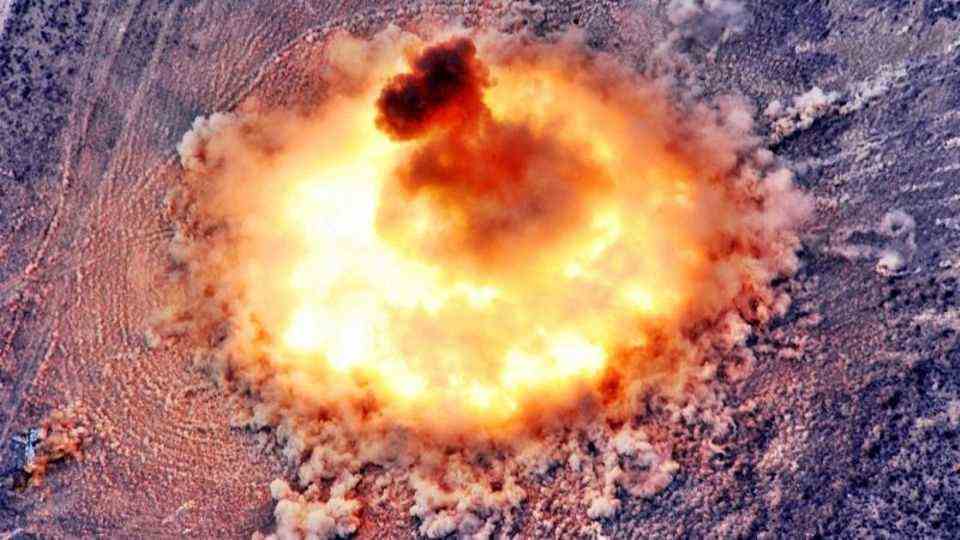Nuclear weapons
Documentary shows the dropping of the most powerful nuclear weapon of all time, the “Tsar Bomb”
Weapons like the “Tsar” were primarily used as a deterrent. Their efforts would have devastated the whole world.
© Rosatom
The “Tsar Bomb” was designed to destroy how world. Only 59 years after its explosion did a Russian film document the deployment.
On October 30, 1961, the largest atomic bomb ever detonated was dropped on Novaya Zemlya, an island in the Arctic Ocean. The enormous bomb had an explosive force of 50 megatons. And actually it was even stronger, but before the drop it was disarmed. The Soviet scientists feared that their bomb could set fire to the northern hemisphere.
For a long time there were only photos and grainy, short video clips of this mission. It was only after 59 years that the Russian nuclear power company Rosatom published a 40-minute documentary about the bombing on the YouTube channel. The strip is kept in the style of the time and of course not critically aligned. However, it still shows many details of the deployment at that time.
Read about this: The “Tsar” – this hydrogen bomb was too powerful to detonate
“Doomsday Weapon”
The “Tsar” marked the end of the development of ever larger hydrogen bombs. In the case of a classic atom bomb, the explosive power cannot be increased arbitrarily, in contrast to a hydrogen bomb – its effect can be increased almost arbitrarily. The “Tsar” was born from an uncanny vision of the arms race of the time. Such a bomb was not a means of warfare, the tsar was a doomsday weapon. The ultimate threat, which should make serious with Einstein’s warning that the war that would follow the nuclear war would again be fought with clubs and spears.
Nikita Sergejewitsch Khrushchev, then General Secretary of the Communist Party of the Soviet Union, had previously requested the development of a thermonuclear weapon with an explosive force of 100 megatons. When the bomb was dropped, modifications were made to reduce the explosive force by half. The film shows how the bomb was transported by a steam train to an air force base on the Kola Peninsula. It was dropped from a specially converted Tu-95 Bär bomber. Like its American counterpart, the B-52, the bear is still in use today. This Tu-95 received a specially adapted bomb bay. The striking white color, on the other hand, was standard for atomic bombers back then.
Zone of Desolation
The film shows how the 26.5 ton bomb falls gently onto the target with its parachute. The detonation was recorded by various cameras. The bomber was accompanied by two machines. One was equipped with measuring devices as a flying laboratory.
The bomb was detonated at an altitude of over 4000 meters. With this method, the radiation exposure should be kept low. When it finally exploded, the bomber was 45 kilometers away. In the film you can see the fireball slowly expanding.
For the first time it is shown that scientists flew into the destroyed area on board helicopters a few hours after the explosion. With protective clothing and a tracked vehicle, they approached the center of the destruction. For “tens of kilometers” the earth was scorched in all directions.
Also read:
– The “Tsar” – this hydrogen bomb was too powerful to detonate
-The father of all bombs – the most powerful conventional weapon in the world
– Block-Buster – The British torched German cities with the HC 4000
– Putin’s new laser is supposed to destroy US missiles and jets
– Experts warn: super-fast missiles make nuclear war more likely



